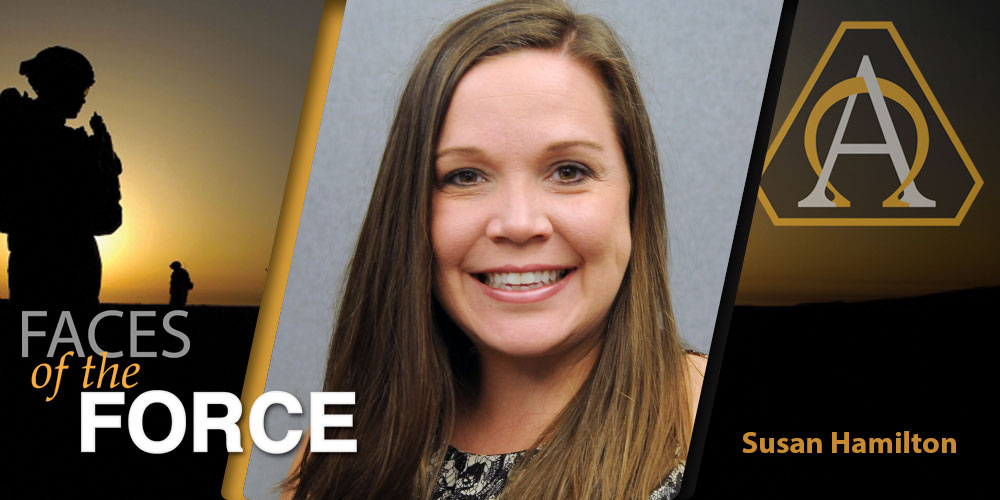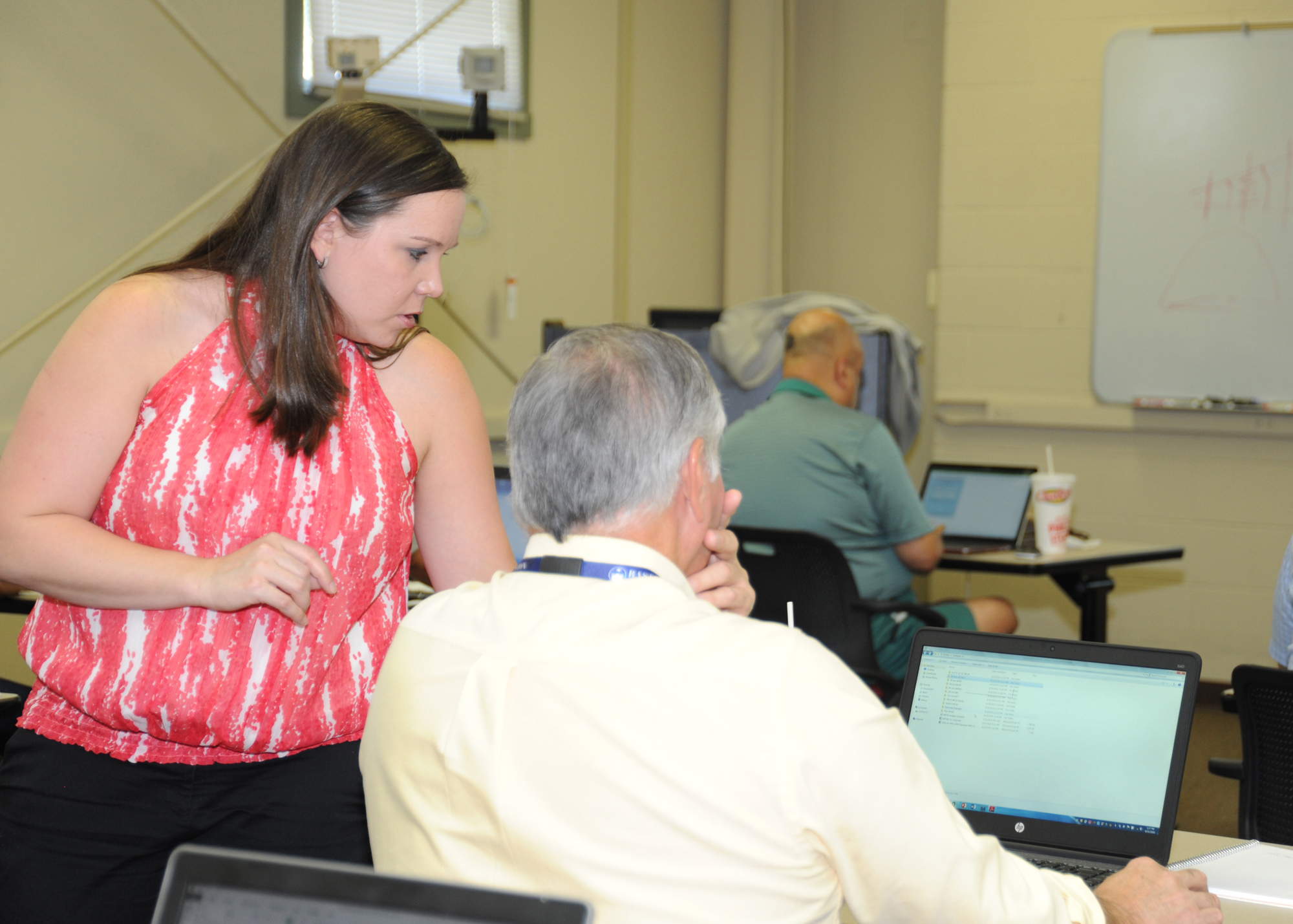
COMMAND/ORGANIZATION: U.S. Army Engineering and Support Center
TITLE: Civil engineer
YEARS IN THE WORKFORCE: 10
DAWIA CERTIFICATIONS: Level II in facilities engineering
EDUCATION: B.S. in civil engineering, Auburn University
Preventing the boom
By Susan L. Follett
Sure, your job might be difficult at times. But Susan Hamilton, a civil engineer for the U.S Army Engineering and Support Center, might have you beat: One of the biggest challenges she faces is reminding Soldiers and civilians that explosives can—and do—blow up. And there’s more to her work than just keeping people safe.
“Sometimes, people working on a project fail to recognize that there are explosives safety requirements or they fail to properly apply the criteria during the construction of new facilities on DOD installations,” she said. “If we fail to correctly understand explosives safety requirements before assigning land to tenants on an installation, DOD could end up with a multimillion-dollar facility that is unusable because it is improperly located.”
Hamilton has been with the U.S. Army Engineering and Support Center in Huntsville, Alabama, for 10 years, transitioning to federal service after several years as a structural engineer in the private sector. “It has been thrilling to become a part of the DOD explosives safety community,” she said. “The most surprising thing about my job so far is how young and developing the science of explosion effects still is. We’ve really only been studying and trying to apply explosion effects from military munitions for the last 90-plus years. There’s a great deal we still don’t know.”

EXPLORING EXPLOSIVES
Susan Hamilton walks students through an application that helps analyze munition fragments during a class Aug. 31 at Redstone Arsenal, Alabama. (U.S. Army photo by Debra Valine, U.S. Army Engineering and Support Center, Huntsville)
What do you do in the Army? Why is it important?
I help the Army and DOD understand explosion effects and develop and meet mandatory explosives safety requirements. It’s important to train and educate new personnel and research and develop explosive compounds and munitions to fight smarter and to understand the devices our enemies would use against us. And it’s equally important for us to determine the hazards of the explosives so that we can safely use them for non-combat missions. It is also important that we develop explosives safety requirements based in science and data to protect our personnel and the general public from our explosives and munitions while still permitting Army and DOD to use them in the most effective manner possible.
If we overestimate the explosion effects in writing these safety standards, we might be safer but we’ll restrict the activities that our bases can perform. This costs taxpayers more money and could result in mission failure. If we underestimate explosion effects, lives are put at risk. So there is a delicate balance that must be achieved between meeting mission requirements and providing for personnel and public safety.
You worked as a structural engineer in the private sector before coming to the Corps of Engineers. How was the transition?
Having worked for the Corps in the summers when I was in college, I knew a great deal about the working environment. The best part of the transition was that I was really entering a whole new career field. I solve problems and use my structural design background to understand certain situations, but I really had no prior training on what I do now and there is so much more to the field than I initially thought there was: new concepts, new regulations, new people and a whole new language to learn. And since the science of explosion effects is still developing, there will likely always be new information to try to digest and apply. But that is part of what makes my job fun.
Is there a skill that you acquired in the private sector that you use in your work today?
My time in the private sector was invaluable in helping me become an engineer. At its heart, engineering is about design and solving the problems associated with designing. The ability to think through a project before it begins and foresee potential problems three steps ahead is some of the toughest work for an engineer. In government now, many engineers tend to lean more on the side of engineering project management or oversight of government contractors. There seems to be very little design work. I encourage any college engineering majors I meet to find a way to do some design work after graduation. The experience and knowledge they will gain will be invaluable as they progress in their career.
What are some of the challenges you face in your work?
More frequently, we see people improperly apply explosives safety standards and use too great a quantity of explosives or too little of their real property in an attempt at ensuring that all explosives safety criteria are met. Using too many explosives is dangerous to workers, and improper utilization of real property is not unsafe but very wasteful. Frequently, we’ve found that we can help an installation meet more missions without encumbering any additional land by rearranging operations. It’s vital to keep explosive activities in explosive areas and non-explosive activities outside of explosive areas.
Outside the United States, sometimes Soldiers become so accustomed to walking around with their ammunition that they become less mindful of the dangers it poses. Commanding officers setting up forward operating bases frequently want to put the ammunition supply point (ASP) near the barracks: In the event of an attack, the warfighter response time will be faster. In reality, this is very dangerous. If the ASP were struck by an incoming rocket, many more lives could be lost than if proper explosives safety distances were applied.
“Faces of the Force” highlights members of the Army Acquisition Workforce through the power of individual stories. The series, produced by the U.S. Army Acquisition Support Center Communication and Support Branch in close coordination with public affairs officers, features Soldiers and DA civilians serving in a variety of AL&T disciplines. For more information, or to nominate someone, go to https://asc.army.mil/web/publications/army-alt-submissions/.


